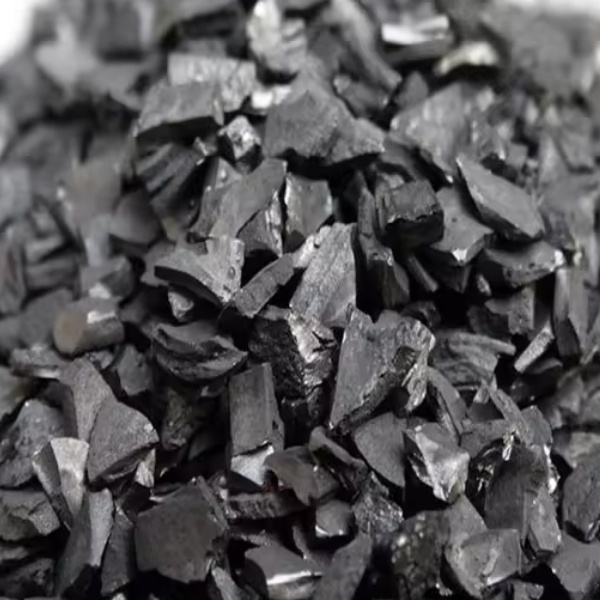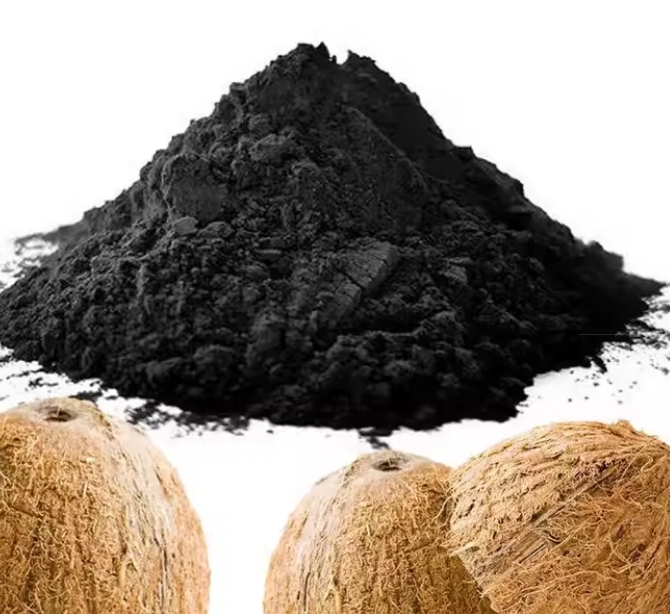Coconut shell activated carbon is a type of activated carbon produced from the shells of coconuts. It is widely used for its high adsorption capacity, It can be used in multiple industries such as water quality purification and ultra pure water filtration,gold extraction in gold mines and air filtration and purification; Here are some key points about coconut shell activated carbon:
How to make coconut shell activated carbon?
Carbonization is the process of converting organic materials into carbon by heating them in the absence of oxygen. This process is used to produce coconut shells charcoal. Load the crushed coconut shells into a carbonization furnace or kiln.Heat the shells at temperatures ranging from 400°C to 800°C in an oxygen-free environment. This can be done using a traditional pit kiln or a more advanced carbonization machine.Maintain the temperature and conditions to facilitate the breakdown of the organic material into carbon and volatile substances.
The activation process is to use activated gases (such as water vapor, flue gas) to undergo an oxidation-reduction reaction with C, eroding the surface of the carbonized material, while removing tar like substances and uncarbonized materials, resulting in the development of the fine pore structure of the carbonized material. This process includes the diffusion of activators from the gas phase to the outer surface of the carbonized material, the adsorption of activators by the inner and outer surfaces of the carbonized material, and the desorption of intermediate and reaction products generated by gasification reactions. Through this process, the specific surface area of activated carbon increases and the pores are developed, thereby improving its adsorption performance.
After activation, the activated carbon is crushed, screened and processed into appropriate particle size for packaging and transportation to the warehouse.
What is Coconut shell activated carbon Properties?
- High Surface Area: The activation process creates a highly porous structure with a large surface area, enhancing its ability to adsorb a variety of substances.
- Micro-pore Structure: It has a predominantly micro-porous structure, making it ideal for adsorbing small molecules.
- Purity: Generally, it has fewer impurities compared to other activated carbons, making it suitable for sensitive applications.
- Hardness and Durability: Coconut shell activated carbon is known for its high mechanical strength and durability, which makes it suitable for repeated use in various applications.
What is Coconut shell activated carbon Used For?
- Water Treatment: It is commonly used in water filters to remove impurities, odors, and chlorine.
- Air Purification: Used in air filters to remove contaminants and odors.
- Gold Recovery: Utilized in the mining industry for gold recovery.
- Food and Beverage Industry: Used to decolorize and purify liquids such as sugar syrup, wine, and fruit juices.
- Medical Applications: Employed in the production of pharmaceuticals and for poison treatment.
- Gas Purification: Used to remove contaminants from gases.
Advantages:
1.Renewable Resource: Since it is made from coconut shells, a byproduct of the coconut industry, it is considered an environmentally friendly and renewable resource.
2.Effective Adsorbent: Its high adsorption capacity makes it effective in removing a wide range of contaminants.
Forms:
1.It can be found in various forms such as granules coconut shell activated carbon (GAC), powder coconut shell activated carbon (PAC), and pellets, depending on the specific application requirements.



